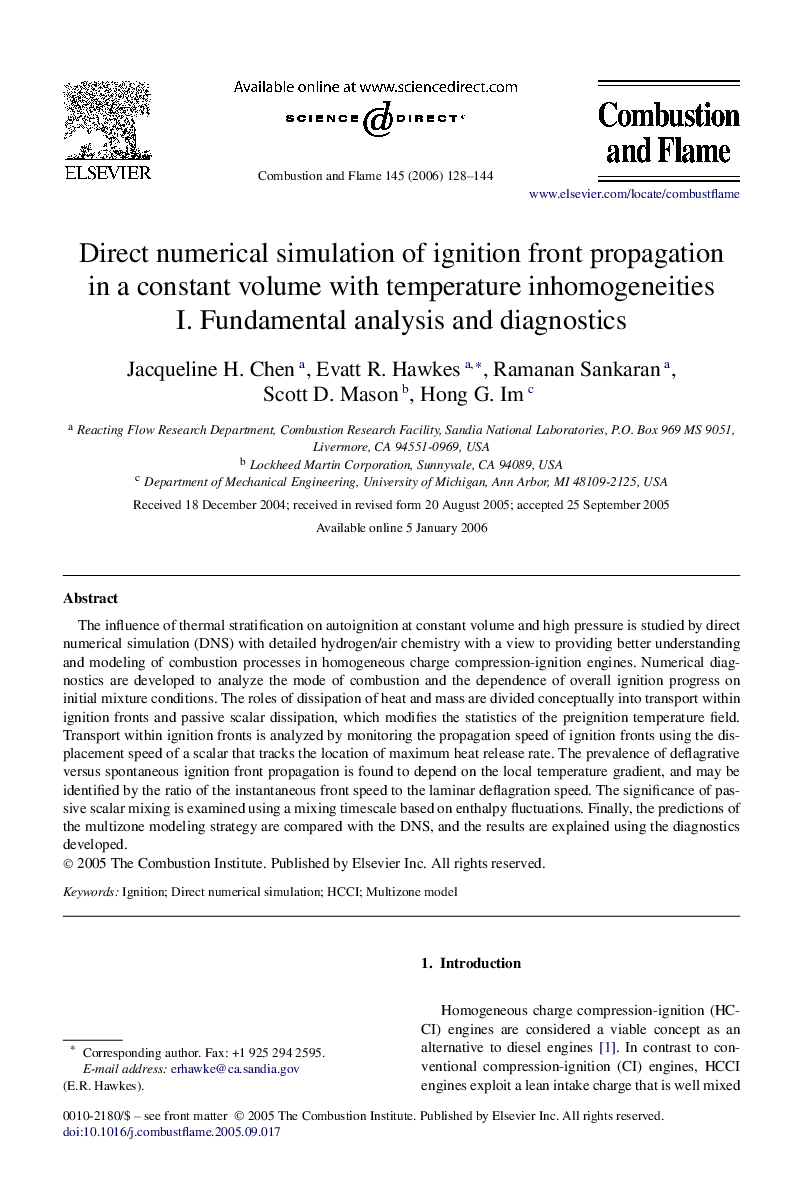| Article ID | Journal | Published Year | Pages | File Type |
|---|---|---|---|---|
| 170176 | Combustion and Flame | 2006 | 17 Pages |
The influence of thermal stratification on autoignition at constant volume and high pressure is studied by direct numerical simulation (DNS) with detailed hydrogen/air chemistry with a view to providing better understanding and modeling of combustion processes in homogeneous charge compression-ignition engines. Numerical diagnostics are developed to analyze the mode of combustion and the dependence of overall ignition progress on initial mixture conditions. The roles of dissipation of heat and mass are divided conceptually into transport within ignition fronts and passive scalar dissipation, which modifies the statistics of the preignition temperature field. Transport within ignition fronts is analyzed by monitoring the propagation speed of ignition fronts using the displacement speed of a scalar that tracks the location of maximum heat release rate. The prevalence of deflagrative versus spontaneous ignition front propagation is found to depend on the local temperature gradient, and may be identified by the ratio of the instantaneous front speed to the laminar deflagration speed. The significance of passive scalar mixing is examined using a mixing timescale based on enthalpy fluctuations. Finally, the predictions of the multizone modeling strategy are compared with the DNS, and the results are explained using the diagnostics developed.
